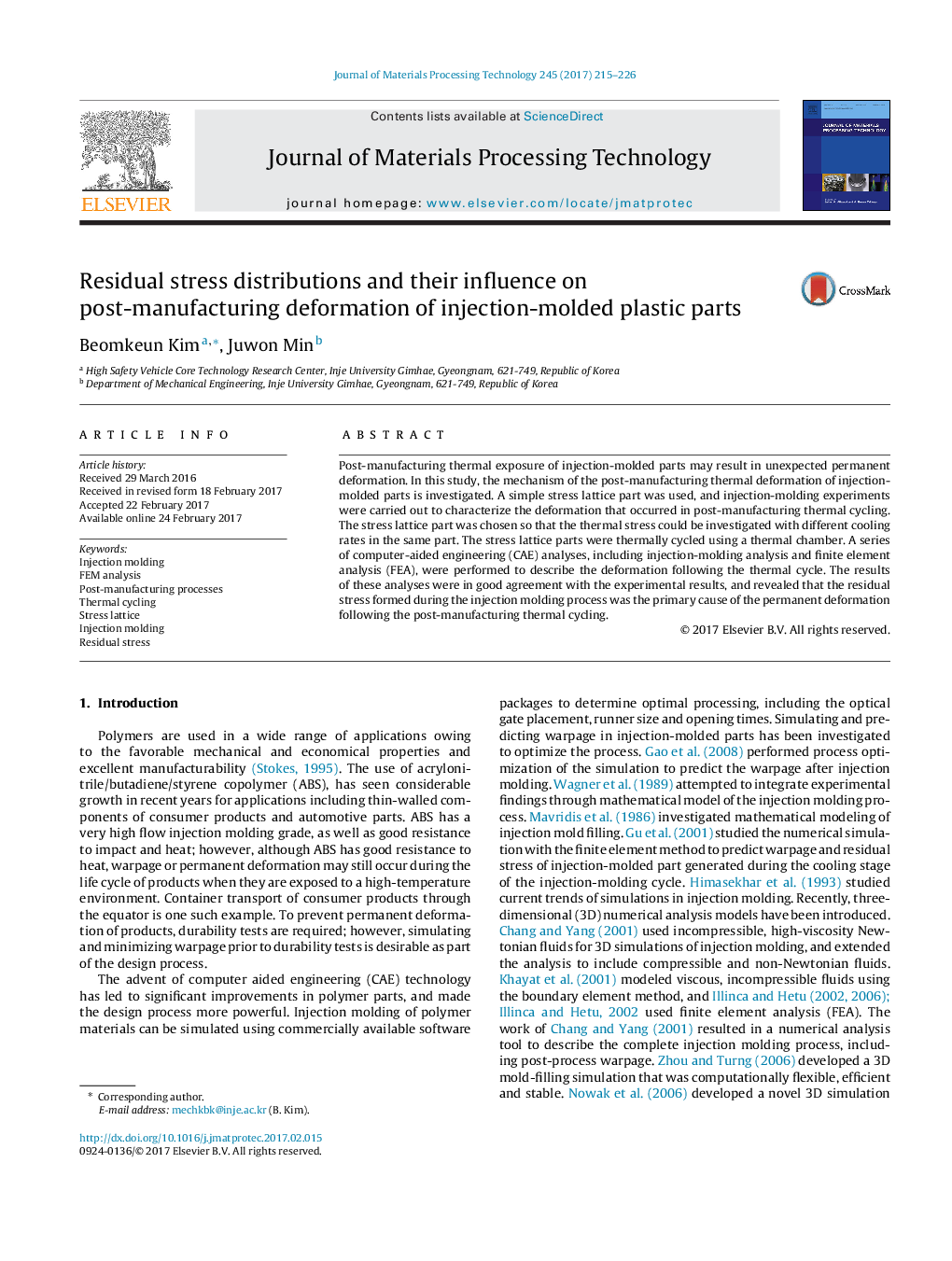| Article ID | Journal | Published Year | Pages | File Type |
|---|---|---|---|---|
| 5018063 | Journal of Materials Processing Technology | 2017 | 12 Pages |
Abstract
Post-manufacturing thermal exposure of injection-molded parts may result in unexpected permanent deformation. In this study, the mechanism of the post-manufacturing thermal deformation of injection-molded parts is investigated. A simple stress lattice part was used, and injection-molding experiments were carried out to characterize the deformation that occurred in post-manufacturing thermal cycling. The stress lattice part was chosen so that the thermal stress could be investigated with different cooling rates in the same part. The stress lattice parts were thermally cycled using a thermal chamber. A series of computer-aided engineering (CAE) analyses, including injection-molding analysis and finite element analysis (FEA), were performed to describe the deformation following the thermal cycle. The results of these analyses were in good agreement with the experimental results, and revealed that the residual stress formed during the injection molding process was the primary cause of the permanent deformation following the post-manufacturing thermal cycling.
Related Topics
Physical Sciences and Engineering
Engineering
Industrial and Manufacturing Engineering
Authors
Beomkeun Kim, Juwon Min,
